Kirsty Boyle
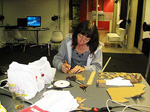 Participant of “ArtistsInLab Robotics Summer 2009” in July 2009 in Medienkunstlabor at Kunsthaus Graz. For the robotic scenario artists were invited to develop their ideas for networked robotics supported by the CO-ME-DI-A project. Special robots were developed that networked with different approaches within the installation and the public space. In her work “Karakuri – Girltron 3.0” Kirsty Boyle focused on robot toys in our society and combined them with the idea of the Karakuri-Robots from the 17th century done in Japan. Her robots are the interface of ceremonies and art that are controlled over the net. A robot snake was created which can react on streamed data from outside introducing a movement style reflecting the recognition of snakes.
Participant of “ArtistsInLab Robotics Summer 2009” in July 2009 in Medienkunstlabor at Kunsthaus Graz. For the robotic scenario artists were invited to develop their ideas for networked robotics supported by the CO-ME-DI-A project. Special robots were developed that networked with different approaches within the installation and the public space. In her work “Karakuri – Girltron 3.0” Kirsty Boyle focused on robot toys in our society and combined them with the idea of the Karakuri-Robots from the 17th century done in Japan. Her robots are the interface of ceremonies and art that are controlled over the net. A robot snake was created which can react on streamed data from outside introducing a movement style reflecting the recognition of snakes.
(see: http://www.onnai.com/film/karakuriinfo-documentary/)
Biography : Kirsty Boyle is an Australian robotic artist who travels the world in order to work with other like-minded puppeteers, animators and roboticists. During 2002, Kirsty began study under Mr Shobei Tamaya, a ninth generation Karakuri Ningyo craftsman and last remaining mechanical doll master in Japan. Her practice is truly interdisciplinary, encompassing skills in sculpture, theatrical performance, film and animation, digital arts and design, mechanical and electrical engineering and computer science. She has presented her work via various mediums, primarily via exhibition, but also television, radio and magazine interviews, to delivering lectures and hosting forums and workshops at educational institutions and festivals internationally.
(see: http://medienkunstlabor.at/projects/artistsinlab/kirsty-boyle.1.html)
Rich Gilbank
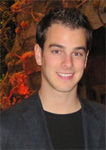 Participant of “ArtistsInLab Robotics Summer 2009” in July 2009 in Medienkunstlabor at Kunsthaus Graz. The “Swarm Hunger” project is an exploration of the properties of emergence and “swarm logic”. Using a number of independent agents with specific rule-sets acting in the interest of themselves, patterns begin to emerge and the formation of structures focused on the good of the total system become apparent. “Swarm Hunger” is one step toward networked robots. The software for creating the environment for the agents utilizes a webcam to track blobs and black out areas where blobs are detected. It is intended to be used with an infra-red filter on the camera so that infra-red lights on the robots can be tracked. The software is made in Java, utilizing Processing and additional libraries such as ControlP5, BlobDetection, and ImageAdjuster. Within an web interface, the swarm behaviour can be observed via video stream.
Participant of “ArtistsInLab Robotics Summer 2009” in July 2009 in Medienkunstlabor at Kunsthaus Graz. The “Swarm Hunger” project is an exploration of the properties of emergence and “swarm logic”. Using a number of independent agents with specific rule-sets acting in the interest of themselves, patterns begin to emerge and the formation of structures focused on the good of the total system become apparent. “Swarm Hunger” is one step toward networked robots. The software for creating the environment for the agents utilizes a webcam to track blobs and black out areas where blobs are detected. It is intended to be used with an infra-red filter on the camera so that infra-red lights on the robots can be tracked. The software is made in Java, utilizing Processing and additional libraries such as ControlP5, BlobDetection, and ImageAdjuster. Within an web interface, the swarm behaviour can be observed via video stream.
(See: http://medienkunstlabor.at/projects/artistsinlab/rich-gilbank/swarm-hunger/SwarmHunger.zip/view.html)
Biography: Rich Gilbank was born in1988. He is an interdisciplinary new media artist from Toronto and owner of Groundhog Media. He went to the New Media program at Ryerson University. Recent projects include a tangible sequencer interface, Tempaural, which implemented physical blocks for the sequencing of audio samples, allowing one to literally build their own soundscape. His work focuses on primarily human-centric applications of technology, such as tangible media, responsive environments, data visualization and interaction design.
(See : http://medienkunstlabor.at/projects/artistsinlab/rich-gilbank.1.html)
Niki Passath
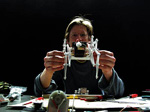 Participant of “ArtistsInLab Robotics Summer 2009” in July 2009 and February 2010 in Medienkunstlabor at Kunsthaus Graz. For the robotic scenario artists were invited to develop their ideas for networked robotics supported by the CO-ME-DI-A project. Special robots were developed that networked with different approaches within the installation and the public space. Vienna based artist Niki Passath spent a month in the lab, creating his new swarm robots family that can communicate between with simple interfaces as a kind of local network within its environment.
Participant of “ArtistsInLab Robotics Summer 2009” in July 2009 and February 2010 in Medienkunstlabor at Kunsthaus Graz. For the robotic scenario artists were invited to develop their ideas for networked robotics supported by the CO-ME-DI-A project. Special robots were developed that networked with different approaches within the installation and the public space. Vienna based artist Niki Passath spent a month in the lab, creating his new swarm robots family that can communicate between with simple interfaces as a kind of local network within its environment.
(See: http://medienkunstlabor.at/projects/artistsinlab/niki-passath.1.html)
Biography: Niki Passath is a robotics artist and is engaged in his work with the sculptural conditions of robots and the idea of artificial intelligence. 1977, born in Graz, he lives in Vienna, Austria and teaches at the University of Applied Arts Vienna. He studied ‘Violoncello’ at the University of Music and Performing Arts in Graz, Austria, ‘Architecture’ at the Technical University in Graz, Austria and at the École d´Architecture Laungedoc Rousillon, Montpellier, France and made his degree in ‘Digital Art’ at the University of Applied Arts in Vienna, Austria. He has received numerous awards including the ‘Theodor Körner Prize’ for his work on ‘Architecture Mules’, which translates generative design capabilities of 3D software into real space.
(See: http://niki.xarch.at/)
Effi Tanner
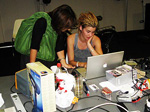 Participant of “ArtistsInLab Robotics Summer 2009” in July 2009 in Medienkunstlabor at Kunsthaus Graz. For the robotic scenario artists were invited to develop their ideas for networked robotics supported by the CO-ME-DI-A project. Special robots were developed that networked with different approaches within the installation and the public space. Effi Tanner’s “Rueckzug in die 2te Dimension” takes videos and pictures from Graz and composes them within a robotic instrument to a stream of information representing the social network of the local place. Video and audio streamed from outside can be played on a accordion with integrated computer and video projector as live performance.
Participant of “ArtistsInLab Robotics Summer 2009” in July 2009 in Medienkunstlabor at Kunsthaus Graz. For the robotic scenario artists were invited to develop their ideas for networked robotics supported by the CO-ME-DI-A project. Special robots were developed that networked with different approaches within the installation and the public space. Effi Tanner’s “Rueckzug in die 2te Dimension” takes videos and pictures from Graz and composes them within a robotic instrument to a stream of information representing the social network of the local place. Video and audio streamed from outside can be played on a accordion with integrated computer and video projector as live performance.
(See: http://medienkunstlabor.at/projects/artistsinlab/effi-tanner.1.html)
Biography: Effi Tanner was born in Zürich, Switzerland in 1982. After finishing a music school she got her bachelor in Fine Arts (Media Arts) at ZhdK. She gave several workshops in robotics, electrical engeneering and animation film. She worked as a tutor for audio programming at Zhdk, as camerawoman and as light and illusion engineer at film sets. Effi Tanner works on interactive video & audio installations, performances and robotic projects.
(See: http://www.effi.me/)
Florian Krebs
![]() Within the “ArtistsInLab Robotics Summer 2009” in July 2009 in Medienkunstlabor at Kunsthaus Graz Florian Krebs worked on Robot Heads and Headtracking. Robot heads were developed for an interactive gaming environment. The heads communicate with the player visually and acoustically. The design is supposed to be as simple as possible, whereas the robot should be still accepted as a valid communication partner. A simple head-tracking was designed to provide a basic head-computer interface.The tracking system recognizes the movements of the head and calculates a value of intensity for the two typical human gestures nodding and shaking. A human player interacts with a Robot Head. Head movements of the player are recorded using optical tracking of a helmet. This controls two servos attached to a small TFT monitor with two degrees of freedom (pan and tilt). This was a study of tracking head positions and reaction in a physical world with physical movement as additional gestural information for communication over network.
Within the “ArtistsInLab Robotics Summer 2009” in July 2009 in Medienkunstlabor at Kunsthaus Graz Florian Krebs worked on Robot Heads and Headtracking. Robot heads were developed for an interactive gaming environment. The heads communicate with the player visually and acoustically. The design is supposed to be as simple as possible, whereas the robot should be still accepted as a valid communication partner. A simple head-tracking was designed to provide a basic head-computer interface.The tracking system recognizes the movements of the head and calculates a value of intensity for the two typical human gestures nodding and shaking. A human player interacts with a Robot Head. Head movements of the player are recorded using optical tracking of a helmet. This controls two servos attached to a small TFT monitor with two degrees of freedom (pan and tilt). This was a study of tracking head positions and reaction in a physical world with physical movement as additional gestural information for communication over network.
(See : http://www.medienkunstlabor.at/projects/artistsinlab/florian-krebs.1.html)
Biography: Florian Krebs is an undergraduate master student at the institute of electronic music [IEM] of the University of Music in Graz, Austria. At the age of six he started his career with playing Bavarian folk music on the guitar in his hometown Regensburg, Germany. Few years later he got a computer and started recording and playing with different sounds. The combination of these two fields, music and technology, attracts him more and more. His main interests are research in sounddesign, human computer interfaces, robotics and computer music. He was working as a developer at the Ars Electronica Futurelab in Linz Austria, and participated in various multimedia projects, e.g. “Hyperdrums” at IEM or “The Trend is Your Friend” at the Medienkunstlabor.
Gerriet Sharma
 Sharma Gerriet has worked on his piece “I-Land” to be played in different Ambisonics environment (CUBE at IEM, Medienkunstlabor, MUMUTH at KUG) and streamed over network Live. It was presented at the Ambisonics Symposium 2009 in Graz. It was a proof of concept that Ambisonics 3D-Audio work can be exchanged between different concert halls. In “I-Land” Sharma Gerriet tried to approach the phenomenon of the Island. The basic material of the composition was recorded during his residency on the island Sylt in April 2008. For four weeks he went out everyday to collect sounds from the island with hydro, contact and other kinds of microphones. Later acoustic details and gestures where extracted, filtered and processed and then arranged and composed with Ambisonics in the Cube of the IEM. The composition sculptures space related constellations of sound sources, clusters and fields according to insular models.
Sharma Gerriet has worked on his piece “I-Land” to be played in different Ambisonics environment (CUBE at IEM, Medienkunstlabor, MUMUTH at KUG) and streamed over network Live. It was presented at the Ambisonics Symposium 2009 in Graz. It was a proof of concept that Ambisonics 3D-Audio work can be exchanged between different concert halls. In “I-Land” Sharma Gerriet tried to approach the phenomenon of the Island. The basic material of the composition was recorded during his residency on the island Sylt in April 2008. For four weeks he went out everyday to collect sounds from the island with hydro, contact and other kinds of microphones. Later acoustic details and gestures where extracted, filtered and processed and then arranged and composed with Ambisonics in the Cube of the IEM. The composition sculptures space related constellations of sound sources, clusters and fields according to insular models.
(See : http://ambisonics-symposium.org/symposium2009/programm-events/concert/i-land)
Biography: Born in 1974 in Bonn, lives in Cologne and Graz. Postgraduate Studies (MFA) in Soundart, Computermusic and Performance at the Academy of Media Arts (KHM) in Cologne. Master Studies in Electroacoustic Composition at the Institute of Electronic Music and Acoustics (IEM), University of Music and Performing Arts in Graz. Since 1990 member of various ensembles for experimental music and sound art. Concerts, workshops, installations and performances at several festivals for electro-acoustic music and sound art in Europe and abroad.
Thomas Grill
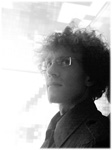 Thomas Grill had an artist residency at MedienKunstLabor in Kunsthaus Graz in April and May 2010, where he developed his audiovisual installation “1/space” which refers to postulated mechanisms of human perception, of shaping all externals as an image of previous sensory impressions. This appears to be reciprocal to the intuitive conception that the world acts on the human consciousness exclusively from the outside through the sensory organs. The visitor of the installation becomes a witness of a perception process carried out by a digital machine equipped with the artificial senses of video camera and microphone that follows the everyday scenery outside the exhibition space and tries to interpret these events employing a limited corpus of experience consisting of images and sound.
Thomas Grill had an artist residency at MedienKunstLabor in Kunsthaus Graz in April and May 2010, where he developed his audiovisual installation “1/space” which refers to postulated mechanisms of human perception, of shaping all externals as an image of previous sensory impressions. This appears to be reciprocal to the intuitive conception that the world acts on the human consciousness exclusively from the outside through the sensory organs. The visitor of the installation becomes a witness of a perception process carried out by a digital machine equipped with the artificial senses of video camera and microphone that follows the everyday scenery outside the exhibition space and tries to interpret these events employing a limited corpus of experience consisting of images and sound.
(See : http://www.medienkunstlabor.at/projects/1-space-thomas-grill/1-space-thomas-grill.html)
Biography: Thomas Grill works as a digital musician, media artist and researcher of sound. His works range from interactive audiovisual installation and photography to composition and improvisation. He has made numerous appearances and presentations as well as scientific publications and lectures. He has collaborated with renowned artists from the fields of music, theatre, dance and video.
(See: http://grrrr.org/)
Peter Ablinger
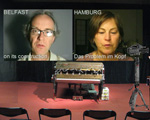 Within an Artist-in-Residency at IEM in October 2010, Peter Ablinger implemented “Real Time Drill”, an “audiosophic” play for three computer controlled pianos and three speakers in three different cities. “Real Time Drill” works like a traditional conference call, except that the voice signal is not reconstructed by a speaker membrane, but by a piano at the other site. The differences between speech sounds and piano, and the increasing convergence of the piano sound to the spoken sound is associated with questions of translatability, connectivity, immediacy and self-deception in the text of the play.
Within an Artist-in-Residency at IEM in October 2010, Peter Ablinger implemented “Real Time Drill”, an “audiosophic” play for three computer controlled pianos and three speakers in three different cities. “Real Time Drill” works like a traditional conference call, except that the voice signal is not reconstructed by a speaker membrane, but by a piano at the other site. The differences between speech sounds and piano, and the increasing convergence of the piano sound to the spoken sound is associated with questions of translatability, connectivity, immediacy and self-deception in the text of the play.
Biography: Peter Ablinger was born in Schwanenstadt, Austria in 1959. He first studied graphic arts and became enthused by free jazz. He completed his studies in composition with Gösta Neuwirth and Roman Haubenstock-Ramati in Graz and Vienna. Since 1982 he has lived in Berlin, where he has initiated and conducted in numerous festivals and concerts. In 1988 he founded the Ensemble Zwischentöne. In 1993 he was a visiting professor at the University of Music, Graz. He has been guest conductor of ‘Klangforum Wien’, ‘United Berlin’ and the ‘Insel Musik Ensemble’. Since 1990 Peter Ablinger has worked as a freelance musician.
(See: http://ablinger.mur.at/)
Peter Venus
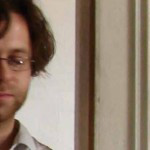 Peter Venus realised the panoramic installation “Extended View” in Kunsthaus Muerz in Mürzzuschlag in December 2010, which was generated within an Artist in Residency program of the CO-ME-DI-A project. The installation enabled live-streaming of a 270° panoramic video and implemented the Ambisonics sound method. “Sensitive Space” was an acoustic and visual space, formed by the interaction and information of the visitors, whereas the interaction of visitors with each other was in the foreground. The enlarged image area was controlled by the “Metamaschine” as an interface between auditory and visual space, which fragmented the original sounds and images of real and tangible Mürzzuschlag and transformed it into an immersive composition. The performative space of “Sensitive Space” describes a kind of collective perception of the musical performances.
Peter Venus realised the panoramic installation “Extended View” in Kunsthaus Muerz in Mürzzuschlag in December 2010, which was generated within an Artist in Residency program of the CO-ME-DI-A project. The installation enabled live-streaming of a 270° panoramic video and implemented the Ambisonics sound method. “Sensitive Space” was an acoustic and visual space, formed by the interaction and information of the visitors, whereas the interaction of visitors with each other was in the foreground. The enlarged image area was controlled by the “Metamaschine” as an interface between auditory and visual space, which fragmented the original sounds and images of real and tangible Mürzzuschlag and transformed it into an immersive composition. The performative space of “Sensitive Space” describes a kind of collective perception of the musical performances.
Biography: Peter Venus is an audio engineer, musician and performer, who is currently studying audio engineering and electronics at the University of music and dramatic arts and the University of technology in Graz, Austria. Before he studied in the same field in London at Lambeth college. Since many years he actively works in the wide field between playing and producing music, recording. He is recording and mixing rock and pop music, classical music, produces sound fashion-shows, makes “radio plays” and own productions of electronic music, jazz and some installations. Right now he is focusing on multichannel audio and theatre productions.
(See : http://www.petervenus.de/)